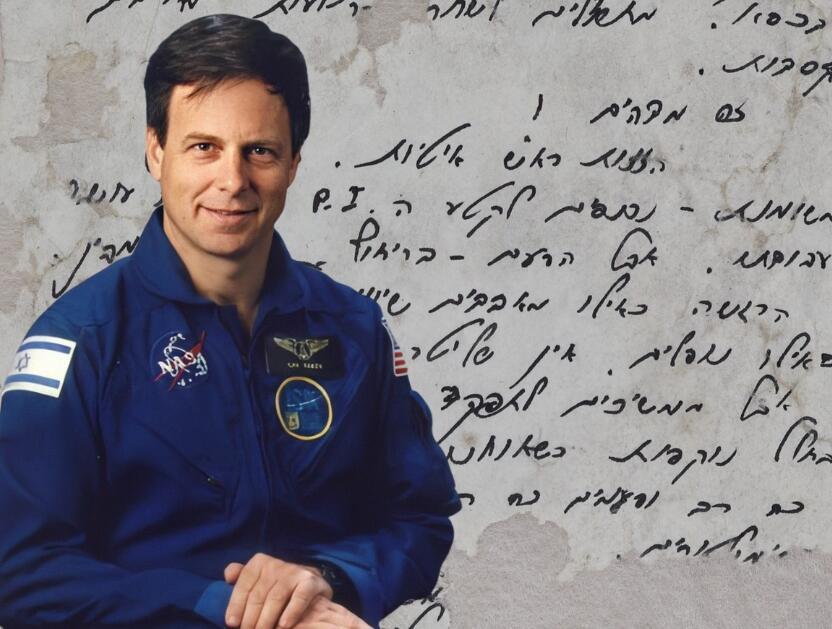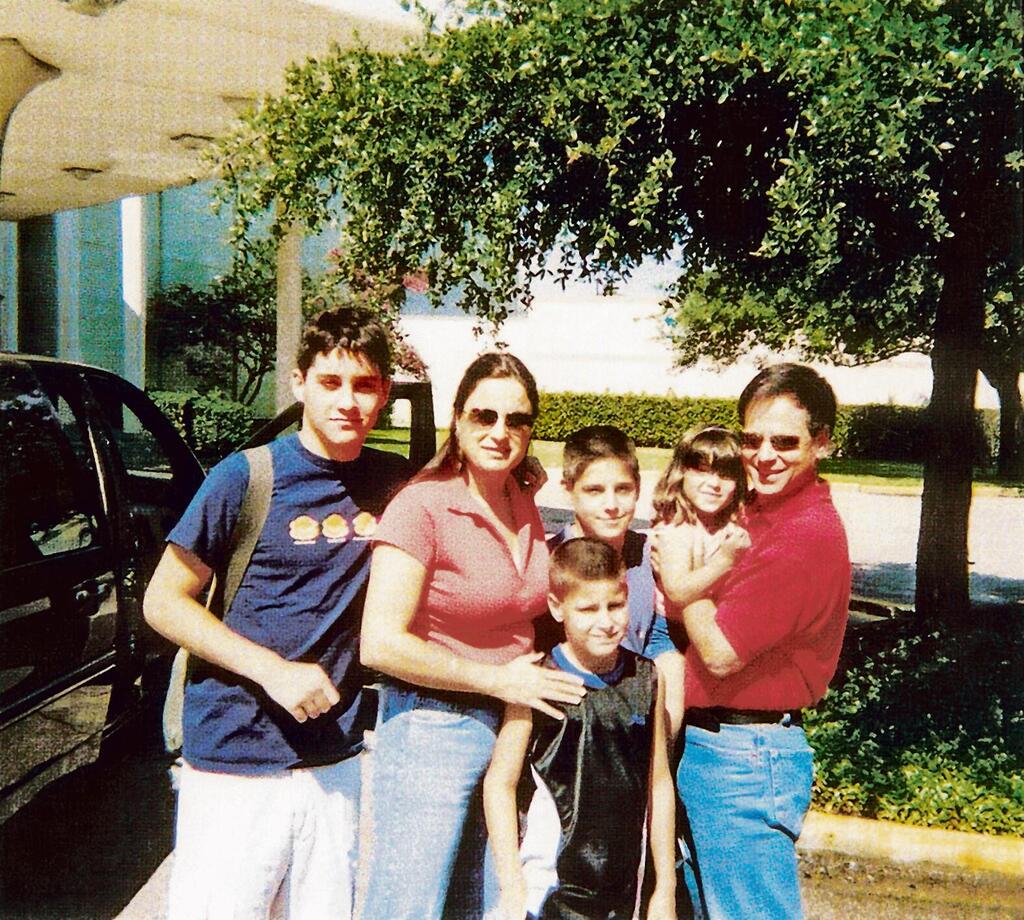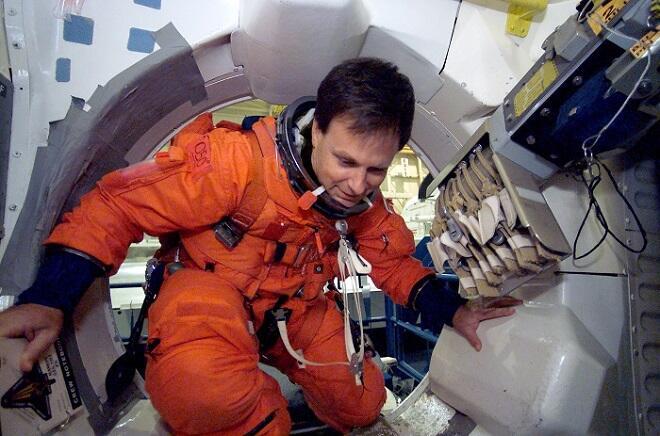When Tal Ramon returned to Houston, Texas, it felt like a homecoming. He spent six and a half years there as a child, while his father, Ilan Ramon — Israel’s first astronaut — trained for the NASA Columbia mission.
“It’s always nice to come back,” Tal said, recalling the sense of nostalgia sparked by familiar views and the unmistakable atmosphere of NASA. “We lived our lives very fully here. We have a lot of good memories here, with the crew and the families of my father's crew members. We were very close, we shared our time together here."
A talk with Tal Ramon, Ilan Ramon's son
(Video: Miki Schmidt)
Now an exhibition in his father’s memory is on display at the Holocaust Museum Houston — a dream long envisioned by Tal’s late mother, Rona Ramon, who led the Ramon Foundation. The exhibition includes rare items from the 2003 space mission, with a centerpiece that defies belief: a page from Ilan Ramon’s personal diary, recovered months after the shuttle disintegrated on reentry. All seven crew members perished in the disaster, but fragments of the diary were found in a Texas swamp and later underwent extensive restoration in Israel.
"This was a miracle that came to us after the disaster. We got this wonderful diary that he kept — a big surprise for us — and now we want to share it with the world and with the Jewish community across the United States," Tal said. "We realized that these were my father's first-person experiences in space. He was writing what he was experiencing and sharing it with us."
3 View gallery


Ilan Ramon with one of the surviving pages from his diary in the background
(Photo: NASA, National Library of Israel)
The exhibition features that diary page, on loan from the National Library of Israel, alongside other deeply personal artifacts: his Israeli Air Force helmet, a NASA training helmet, kosher food containers prepared for the mission and a replica of the mezuzah he took into space in memory of Holocaust victims.
Ramon, the son of a Holocaust survivor, felt a deep connection to Holocaust remembrance. Among the items he brought to space was a sketch by 14-year-old Petr Ginz, a Jewish boy murdered at Auschwitz. The drawing, titled Earth Seen from the Moon, was created while Ginz was imprisoned in the Theresienstadt ghetto.
“Just thinking about the crazy idea of a boy in the Holocaust imagining what it would be like to be up in space, looking down on Earth, really moved him,” Tal said. “So he took it to space, talked about it — and it was very moving."
The idea to bring this story to an American audience — and especially to Houston, where the Columbia crew trained and where the diary was found — belonged to Rona Ramon.
“My mother always dreamed of doing this,” Tal said. “Fulfilling this dream — it's really moving for me to be here, to speak and to tell my family's story to Jews and guests who will come to see this wonderful exhibition. It's huge for me and for our family. My mother really hoped this would happen one day, and I'm very happy it's happening now."
Ramon Foundation CEO Gil Doron said, “The renewed presentation of the diary page in Houston — the city where Ilan and his crew trained, and where the remains of the diary were found — is not only a personal tribute but a meaningful act of remembrance and vision. This is a deeply Israeli story, touching on identity and the power to grow through grief. The Ramon Foundation is honored to take part in this moment and to share this unique story with the broader public in the United States.”
The exhibition opened in late May and will remain on display for three months before the diary page returns to its permanent home in Jerusalem.





